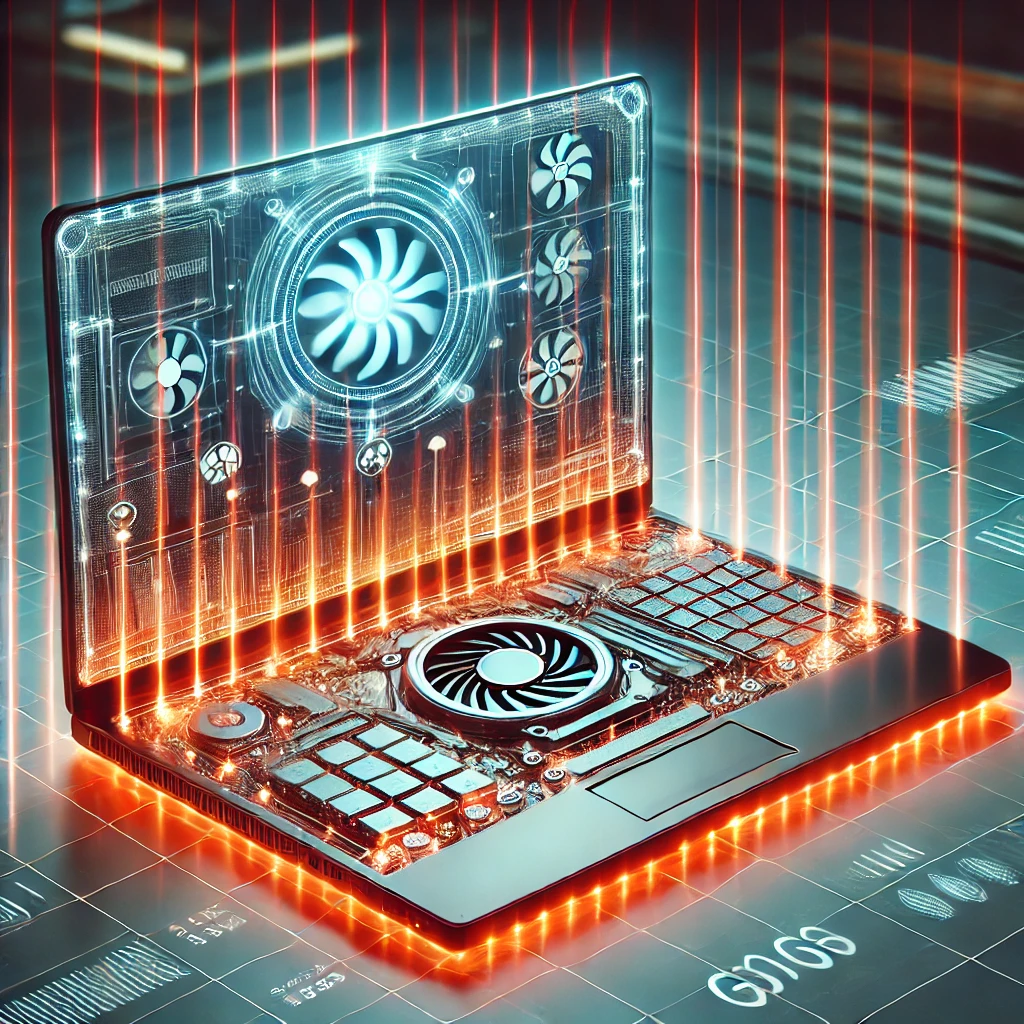Laptops are marvels of compact technology, packing powerful components into a portable form factor. However, this concentration of power can generate significant heat, potentially leading to performance issues and even damage. This article delves into the reasons why laptops get heated, explores the signs of overheating, and provides practical solutions to keep your device cool and running smoothly.
The Basics of Laptop Functionality
1. How Laptops Operate
Laptops consist of various components, including:
- CPU (Central Processing Unit): The “brain” of the laptop, responsible for executing instructions.
- GPU (Graphics Processing Unit): Handles graphics processing for displays and visual applications.
- RAM (Random Access Memory): Stores data that the CPU needs to access quickly.
These components consume power, and a byproduct of this power consumption is heat generation. Efficient design and layout are crucial to manage this heat effectively.
2. The Nature of Heat Production
The laws of thermodynamics dictate that energy cannot be created or destroyed, only transformed. In electronics, electrical energy is converted into heat energy during operation. The amount of heat generated depends on factors like the workload, the efficiency of the components, and the overall design of the laptop.
3. Heat Dissipation Mechanisms
Laptops employ cooling systems to dissipate heat, typically consisting of:
- Heat sinks: Metal plates that absorb heat from components.
- Fans: Disperse hot air away from the laptop.
- Thermal paste: A substance that improves heat transfer between components and heat sinks.
Effective ventilation is crucial for these cooling systems to function optimally.
Factors Contributing to Overheating
1. Heavy Usage Patterns
- Resource-intensive applications: Running demanding applications like video editing software, games, or multiple programs simultaneously puts a heavy load on the CPU and GPU, generating more heat.
- Extended usage: Continuous use without breaks can cause heat to build up over time.
2. Environmental Influences
- Ambient temperature: Using a laptop in a hot environment can hinder its ability to dissipate heat effectively.
- Surfaces: Placing a laptop on soft surfaces like beds or blankets can block air vents and trap heat.
- Dust and debris: Accumulation of dust in vents and fans can obstruct airflow and reduce cooling efficiency.
3. Hardware Limitations
- Processor architecture: Some processors generate more heat than others due to their design and power consumption.
- Age and wear: As laptops age, components can become less efficient, leading to increased heat production.
- Thermal throttling: To prevent damage from excessive heat, laptops may reduce performance, leading to slowdowns.
Signs and Symptoms of Overheating
1. Physical Indicators
- Hot surfaces: The laptop’s exterior, especially near the keyboard or bottom, may become excessively hot to the touch.
- Fan noise: The fans may spin loudly and constantly as they struggle to cool the system.
2. Performance Changes
- Slowdowns: Applications may take longer to load or respond, and overall system performance may feel sluggish.
- Crashes: The laptop may crash or shut down unexpectedly due to overheating.
- Reduced battery life: Excessive heat can strain the battery and reduce its lifespan.
3. User Experience
- Discomfort: The heat from the laptop can make it uncomfortable to use, especially on the lap.
- Noise: Loud fan noise can be distracting and disruptive.
Solutions to Manage Laptop Heat
1. Improving Ventilation
- Placement: Use the laptop on a hard, flat surface to ensure proper airflow.
- Cooling pads: Consider using a cooling pad with external fans to improve ventilation.
- Clean vents: Regularly clean the air vents to remove dust and debris.
2. Software Adjustments
- Monitoring usage: Use task manager or monitoring software to identify resource-intensive applications.
- Power settings: Adjust power settings to a more balanced or energy-saving mode to reduce heat generation.
- Update drivers: Ensure your laptop’s drivers and firmware are up to date for optimal performance and efficiency.
3. Hardware Upgrades
- Thermal paste: Replacing old thermal paste can improve heat transfer between components and the heat sink.
- Fan upgrades: Consider upgrading the laptop’s fan or cooling system for better heat dissipation.
Preventive Measures for Laptop Heat Management
1. Regular Maintenance
- Cleaning: Periodically clean the laptop’s internal components and fans to prevent dust buildup.
- Hardware checks: Schedule regular checkups to identify potential issues before they lead to overheating.
2. Optimal Usage Practices
- Breaks: Take breaks during extended use to allow the laptop to cool down.
- Positioning: Avoid using the laptop on soft surfaces or in hot environments.
- Multitasking: Limit the number of resource-intensive applications running simultaneously.
3. Awareness and Education
- Specifications: Understand the laptop’s specifications and limitations to make informed choices about usage.
- Heat management: Educate yourself on proper heat management practices.
Conclusion Of Why Laptops Get Heated
Laptops generate heat as a natural byproduct of their operation. However, excessive heat can lead to performance issues, discomfort, and even damage. By understanding the causes of overheating and implementing the solutions and preventive measures outlined in this article, you can keep your laptop cool, ensure optimal performance, and prolong its lifespan.
FAQ’s
Is it normal for a laptop to get hot?
Yes, it’s perfectly normal for laptops to get warm during use, especially under heavy loads like gaming or video editing.
However, excessive heat that makes the laptop uncomfortable to touch or causes performance issues is a sign of concern.
How do I stop my laptop from overheating?
Here are some quick tips:
Ensure proper ventilation: Use it on a hard, flat surface, and keep vents clear.
Clean dust regularly: Remove dust from vents and fans.
Monitor usage: Close unnecessary programs and browser tabs.
Adjust power settings: Use a balanced or energy-saving power plan.
Use a cooling pad: Consider an external cooling pad to improve airflow.
How do I cool down my laptop?
If your laptop is already hot, try these:
Take a break: Stop using it for a while to let it cool down.
Improve airflow: Elevate the laptop or use a cooling pad.
Reduce workload: Close unnecessary programs.
Adjust fan speed: Some laptops allow you to manually increase fan speed.
Is it bad for a laptop to heat?
Yes, excessive heat can damage laptop components, reduce performance, and shorten lifespan.
It’s crucial to manage heat effectively to ensure optimal performance and longevity.


